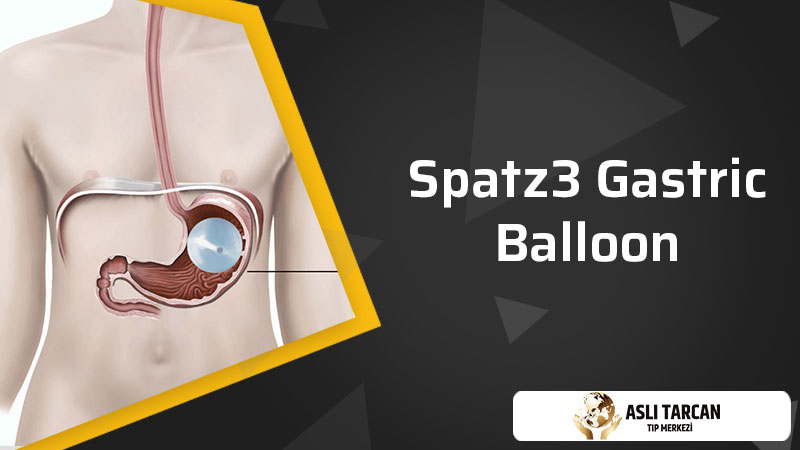The Spatz3 Gastric Balloon, called the adjustable gastric balloon, remains in the stomach for 1 year. The difference between this balloon, which is placed in your stomach with endoscopy, from other balloons is that its volume can be adjusted by endoscopy when necessary. While the volume of the balloon is constant in other balloons, that is, it remains constant after being inflated once, the volume of the SPATZ3 gastric balloon can be increased or decreased according to the patient’s needs. Adjustable Gastric Balloon is a more ideal method for patients with a Body Mass Index of 30-40.
During a 15-minute non-invasive outpatient surgery, the Spatz3 Gastric Balloon is implanted. There is no need for incisions or hospitalization. It is a walk-in, walk-out treatment for weight loss. The Spatz3 is the only adjustable gastric balloon on the market, allowing patients to lose weight more effectively. Patients can learn to understand their bodies’ cues and establish healthy eating habits when the balloon is withdrawn, allowing them to sustain their weight reduction. Patients have obtained nearly double the weight reduction outcomes and the greatest success rates of all other gastric balloons since Spatz3 has the distinctive adjustment feature.
Spatz3 Gastric Balloon
The gastric balloon is one of the non-surgical treatments for treating obesity, and it is also the most popular. Gastric balloons, which have been used in the treatment of obesity for a long time, have shown their usefulness through time, have risen to the forefront in many ways when compared to other options, and are now commonly favored. In addition to being nearly similar to other treatment options in terms of expense, it is common for patients who want a gastric balloon installed to do so since it has several advantages in various aspects.
The physician will examine your medical history and do a brief physical examination during the initial appointment to determine if you are a suitable candidate for the weight reduction treatment. The balloon therapy, with all of its benefits and hazards, will discuss, as well as other choices and their benefits and risks. It’s critical to understand how a balloon works and how to utilize it successfully to reach your weight loss and health-related objectives. Your doctor and dietitian will examine your eating habits, health issues, and weight reduction objectives with you.
Your doctor will determine which pre-screening examinations you will need in order to achieve maximum results. Any or all of the following may include in a pre-screening assessment: Under conscious anesthesia, the gastric balloon implant endoscopically. The balloon inserts into the stomach and inflate with saline during the non-surgical treatment. Within an hour, you will release. If necessary, the stomach balloon can deflate and remove at any moment.
Spatz3 Gastric Balloon Post-Insert Procedure
You will be uncomfortable for the first 3-5 days after the gastric balloon surgery, and you may have nausea, cramps, vomiting, and heartburn. This will generally pass within a week (though it may linger longer in certain circumstances), and every effort will take to minimize any potential adverse effects. Medication to soothe your stomach and reduce nausea and vomiting will be provided. It’s critical to take the medicine before the nausea sets in.
You will be on a liquid-only diet for the first three days following insertion, gradually transitioning to a semi-solid diet. Many people will be able to resume a normal diet in around two weeks.
The gastric balloon capacity might reduce with an adjustment operation if you suffer extreme or persistent nausea, vomiting, or discomfort. The gastric balloon capacity can raise with an adjustment operation if the balloon effect fades and you hit a weight reduction plateau.
A 15-minute endoscopic operation can alter the gastric balloon capacity. A liquid diet requires for three days prior to the adjustment. Followed by a fast beginning at midnight the night before the operation. While you are under conscious sedation, adjustments will perform. The adjustment, like the insertion, is non-surgical, and you’ll be out in less than an hour.
What Makes Spatz3 Gastric Balloon Different?
The gastric balloon will remove via endoscopy at the end of the therapy term. A liquid diet requires for three days before the surgery, followed by a fast beginning at midnight the night before. You will release within an hour of the procedure. The saline-filled balloon will take up roughly a third of the stomach cavity once it implants. The stomach’s capacity to retain food reduce as a result. The balloon also prevents stomach emptying, causing food to remain in the stomach for longer. These effects, when combined, encourage people to eat lesser portions of food.
There are numerous benefits to using the Spatz3 intragastric balloon. It’s adjustable, which means it’s dynamic, and you can modify the level as your needs change. In comparison to other products on the market, it approves for a longer implantation time. The Spatz3 balloon is the first to have both of these features. It’s unlikely that leaving a balloon in the stomach for longer without changing its volume will result in more weight loss. The extended implantation period allows for more time for behavior adjustment, resulting in more long-term behavioral changes.
The intragastric balloon intends to help patients who need to lose 10 kilograms (22 pounds) or more, or who have a BMI of more than 27. In certain nations, a BMI of higher than 30 considers normal. Spatz3 can also use by persons who are not candidates for weight reduction surgery or who frighten of bariatric surgery. Such as Gastric Bypass, Sleeve Gastrectomy, Lap-Band surgery, and others. The use of the balloon may help with weight loss prior to surgery, lowering the risks connected with surgical operations. The Spatz Gastric Balloon is a noninvasive bariatric surgery option.
Things To Consider About Spatz3 Gastric Balloon
For a few days after the balloon place in the stomach, it is highly possible that nausea, vomiting. Or abdominal discomfort of different intensity may occur. Your doctor may prescribe medicine to help alleviate these side effects, although they may last for the first week.
After the first week, once you’ve established a regular eating schedule, adverse effects will link to the amounts and types of food you consume. Bloating, belching, discomfort, nausea, vomiting, and heartburn are all symptoms of improper eating.
What is a Spatz3 Gastric Balloon, and Is It Any Good?
The Spatz3 gastric balloon is an FDA-approved medical device designed to help people lose weight and reduce their risk of obesity-related conditions. It involves inserting a silicone balloon into your stomach and filling it with saline solution. This creates an artificial sense of fullness that helps you eat less while still feeling satisfied. In other words, it reduces hunger, allowing you to eat smaller portions and lose weight over six months.

Studies have shown that Spatz3 can help people lose up to 30% of their excess body weight in six months, depending on their diet, exercise regimen, and other factors. In addition, it can also improve metabolic parameters such as cholesterol levels and blood pressure.
The Spatz3 gastric balloon is a safe and effective tool for those looking to lose weight and improve their health. If you decide that Spatz3 is suitable for you, please get in touch with your physician or healthcare provider for more information on this device or its use in weight loss. They will be able to provide you with more information about the benefits and risks of this type of treatment.



